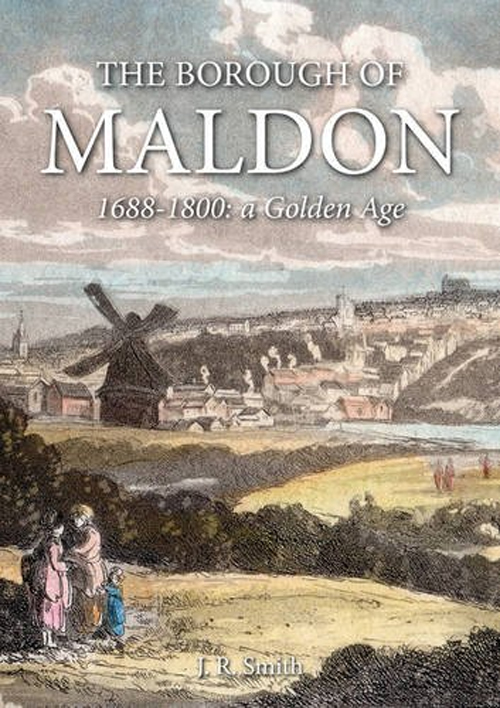The Borough of Maldon 1688-1800: a Golden Age
Review

The Borough of Maldon 1688-1800: a Golden Age, J. R. Smith, Brewin Books, 2013, 532p [97 illustrations, 5 maps and 18 tables], £35-00. ISBN 978-1-85858-513-0.
This is a work of meticulous scholarship, as one might expect from someone who studied under the painstaking scholarship of Professors Alan Everitt and Charles Phythian-Adams at Leicester University's Department of English Local History. These two latter encouraged the careful referencing which is evident in this exceptional work on this Essex market town and port.
John Smith has laid claim to 18th Century Maldon to complement William Petchey's earlier A Prospect of Maldon 1500-1689 [1991]. Anyone who wishes to know anything about any aspect of 18th Century Maldon's history is recommended to explore this book. It is not a chronological work: what John Smith has done is to identify various themes and then reveal what he has discovered in his thirty years of research within these various categories. Some aspects are better resourced than others, and this will have been regulated by the availability of archive material. From my perspective from my own thesis on the inns of 17th and 18th Century Croydon, what he provided on inns seems relatively light, albeit informative, but I do remember Professor Jack Simmons trying to encourage me to pursue the detail of the inns of Leicester, just after his two notable books on the history of Leicester had appeared, because he had found tracing archive material on inns a near-insurmountable challenge, so this may be a common obstacle.
The author is very strong on the economic and strategic significance of Maldon, and his explanation of the lassitude of local government in Maldon, culminating in the effective suspension of the borough corporation in 1769, is very interesting and informative, in that this collapse occurs at a time when elsewhere the pressure for electoral and representational reform was growing apace. This just re-enforces the fact that local studies often produce patterns which do not accord with wider trends.
Many readers of this book will, I believe, be motivated to try to draw their miscellaneous researches together to try to match the coherence that John Smith has achieved, albeit with the footnote information being better managed by trying to incorporate more of the material into the text. Anyone studying 18th Century provincial towns will find this a very worthwhile template and reference point for their own exploration of an 18th Century town.

